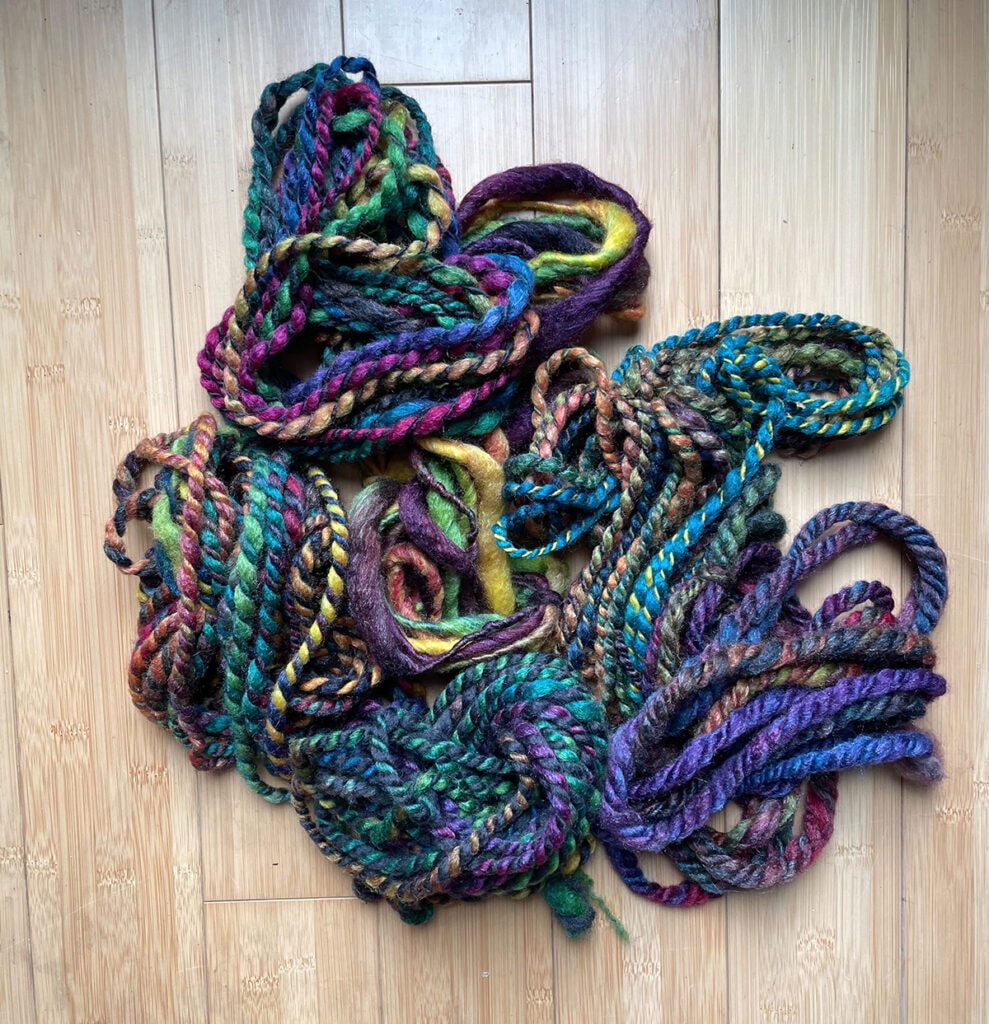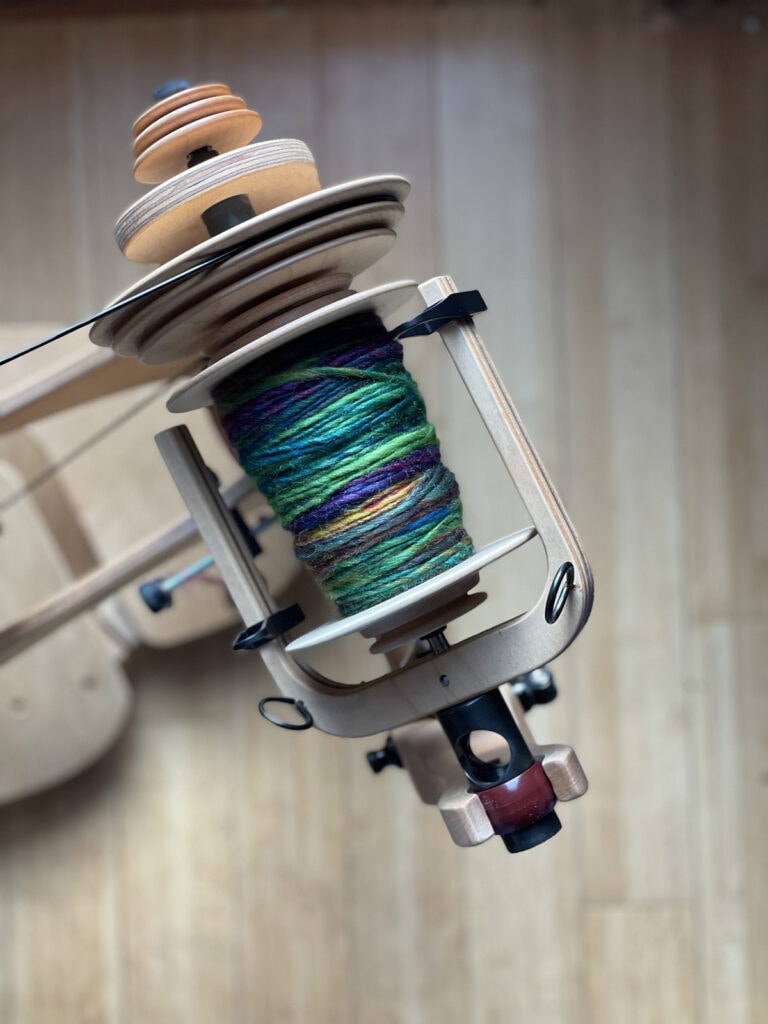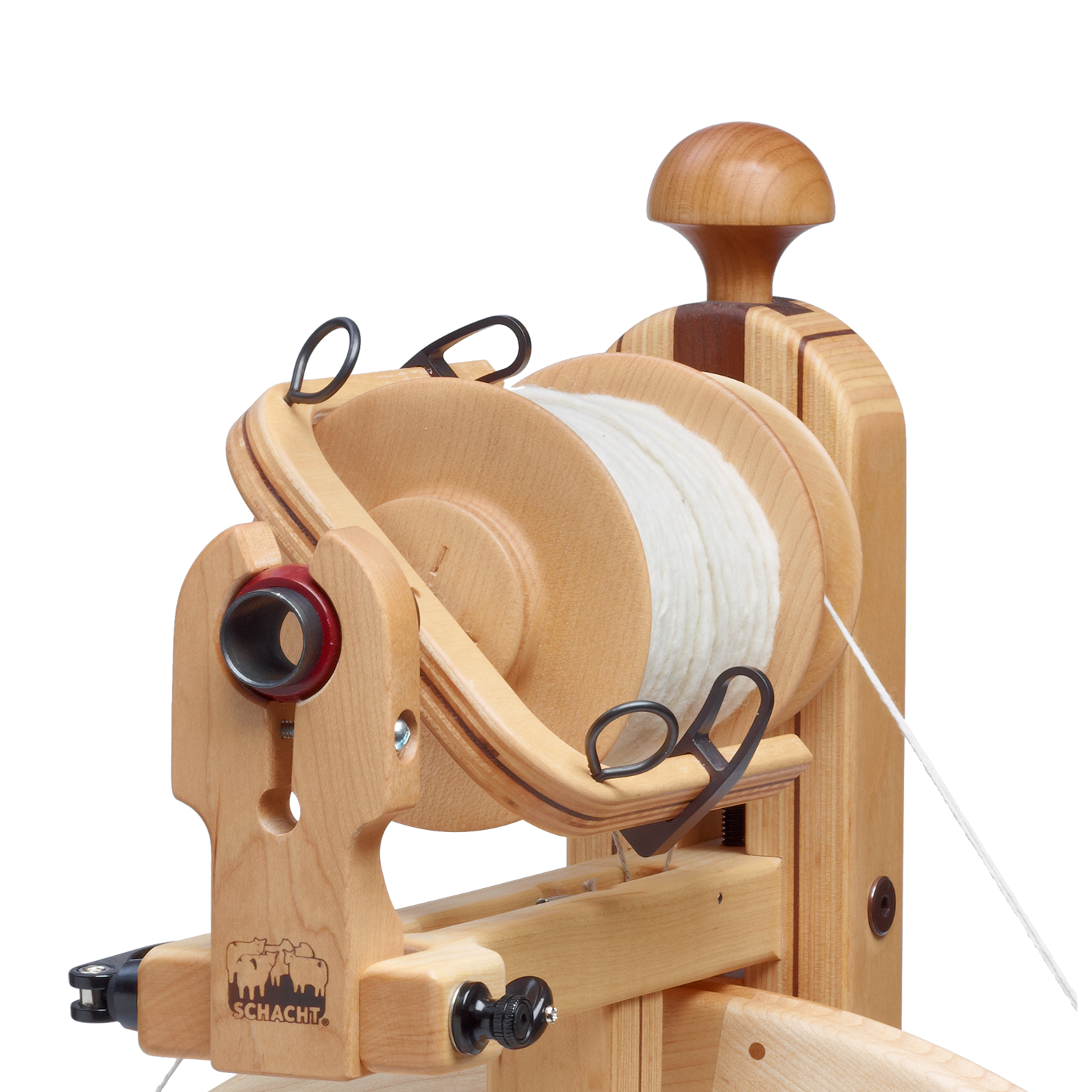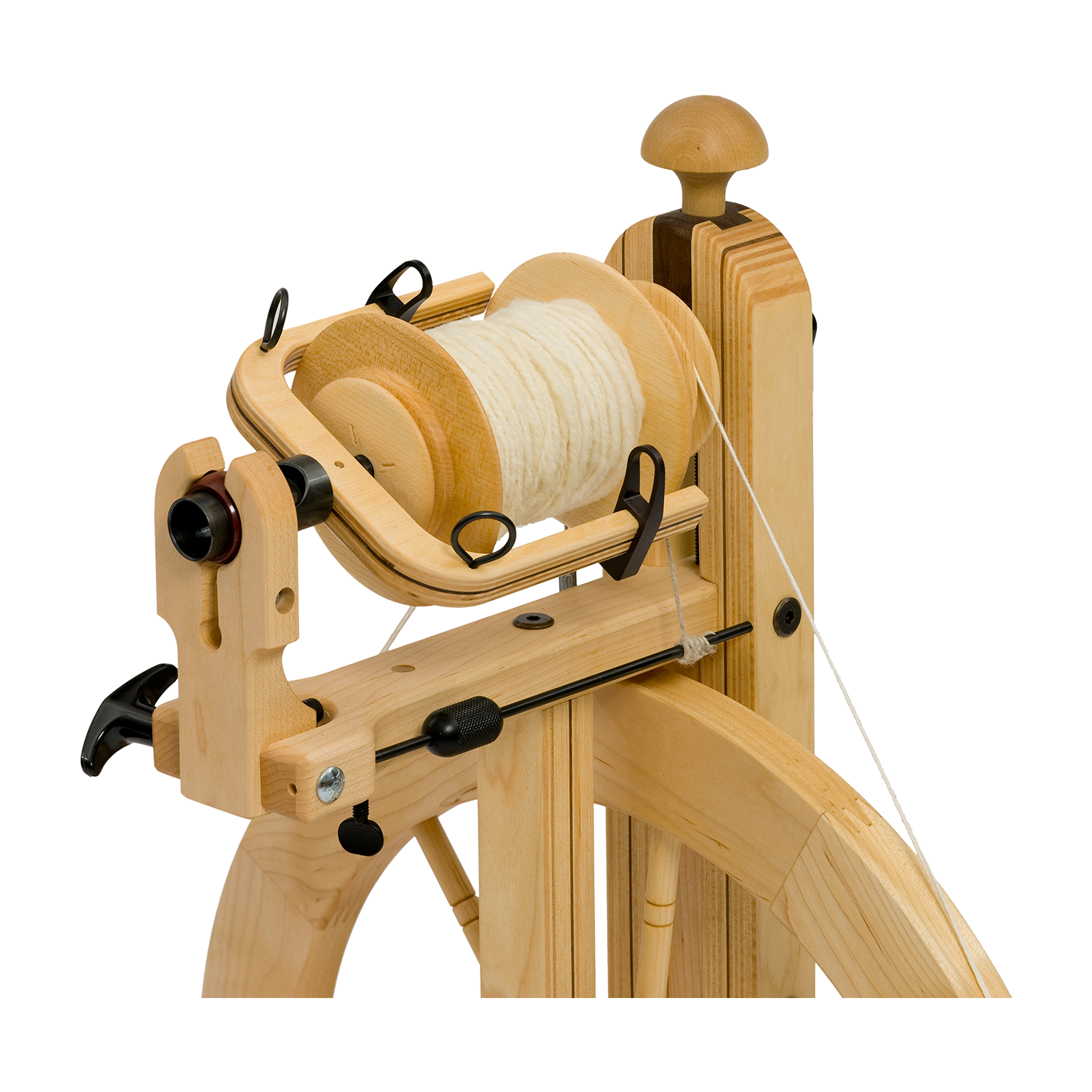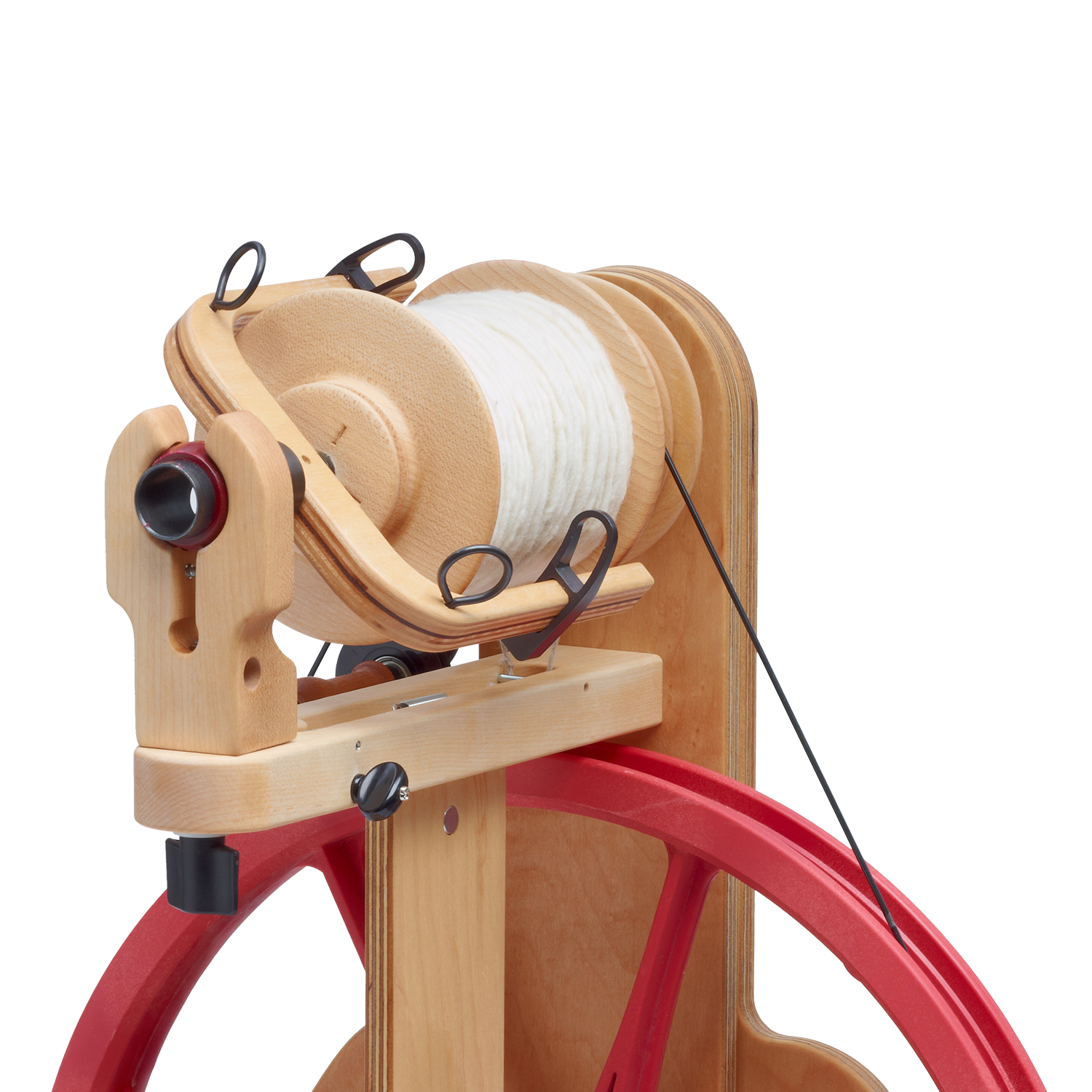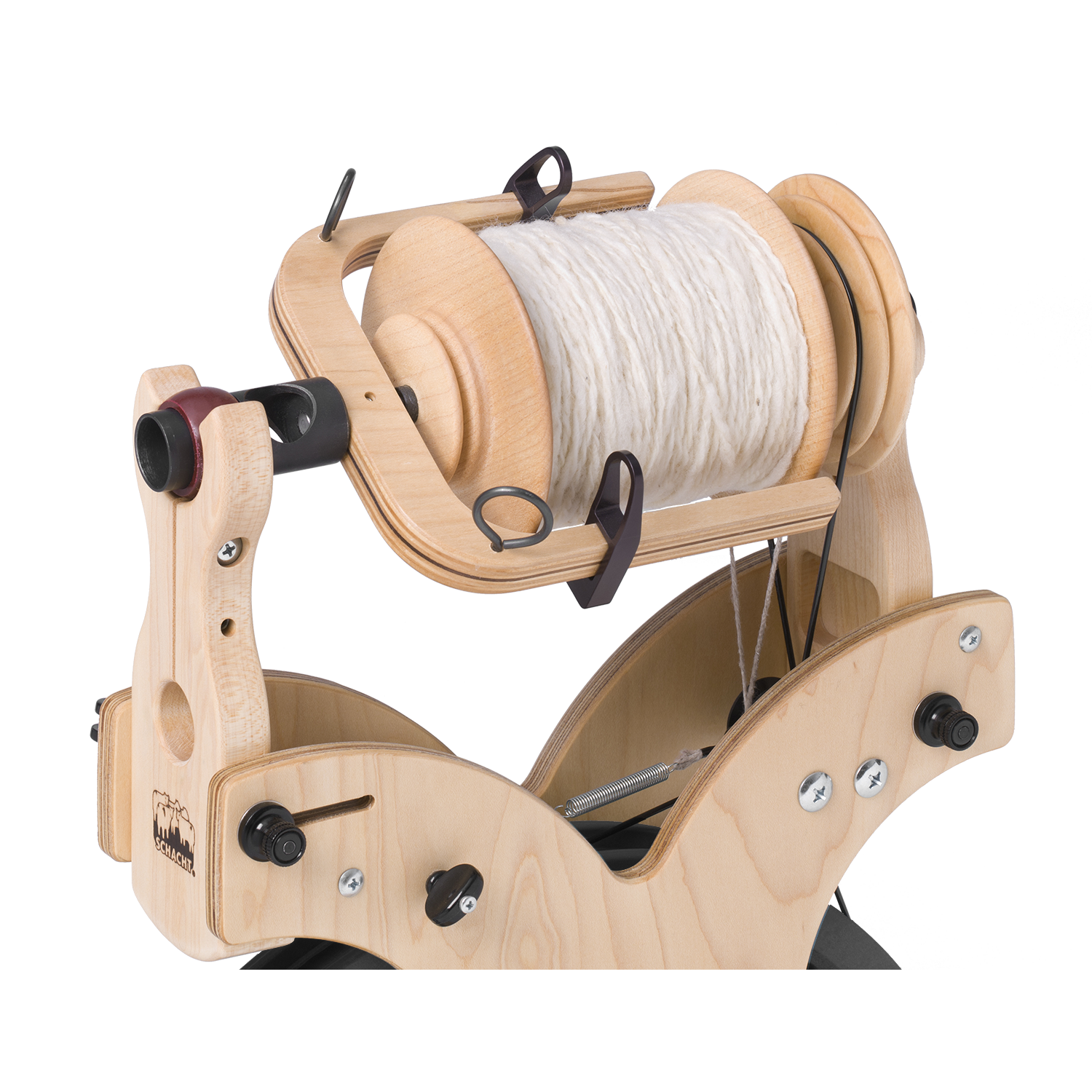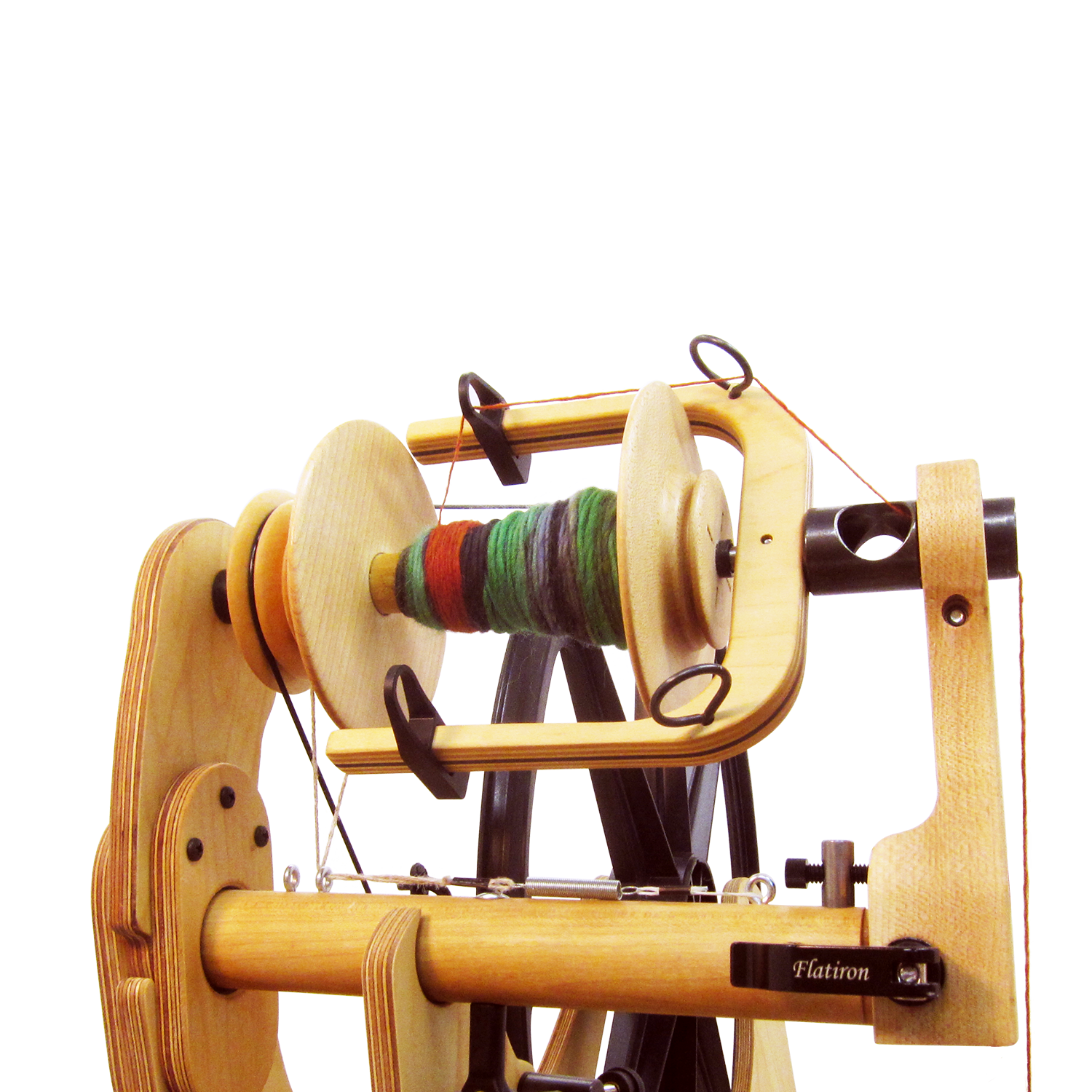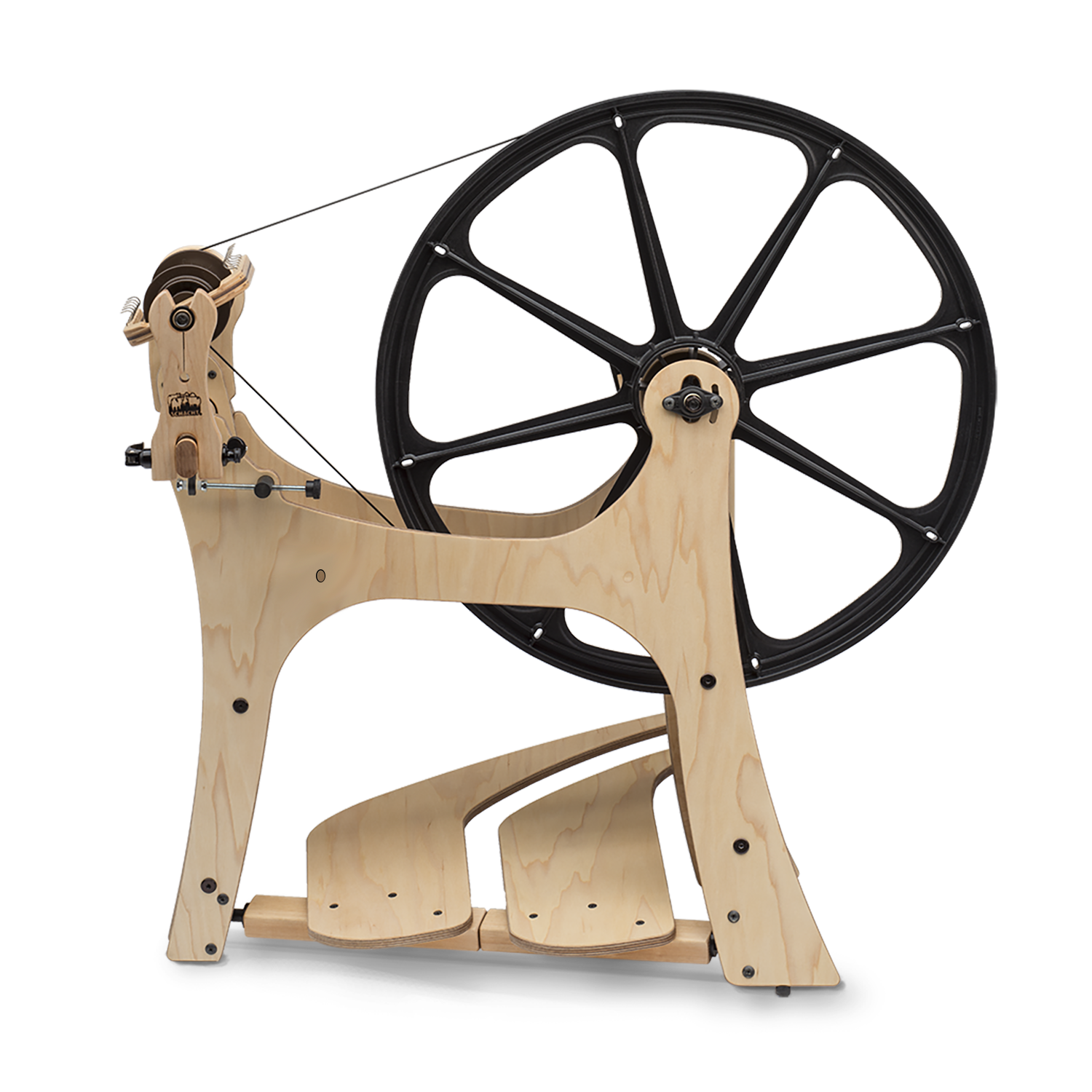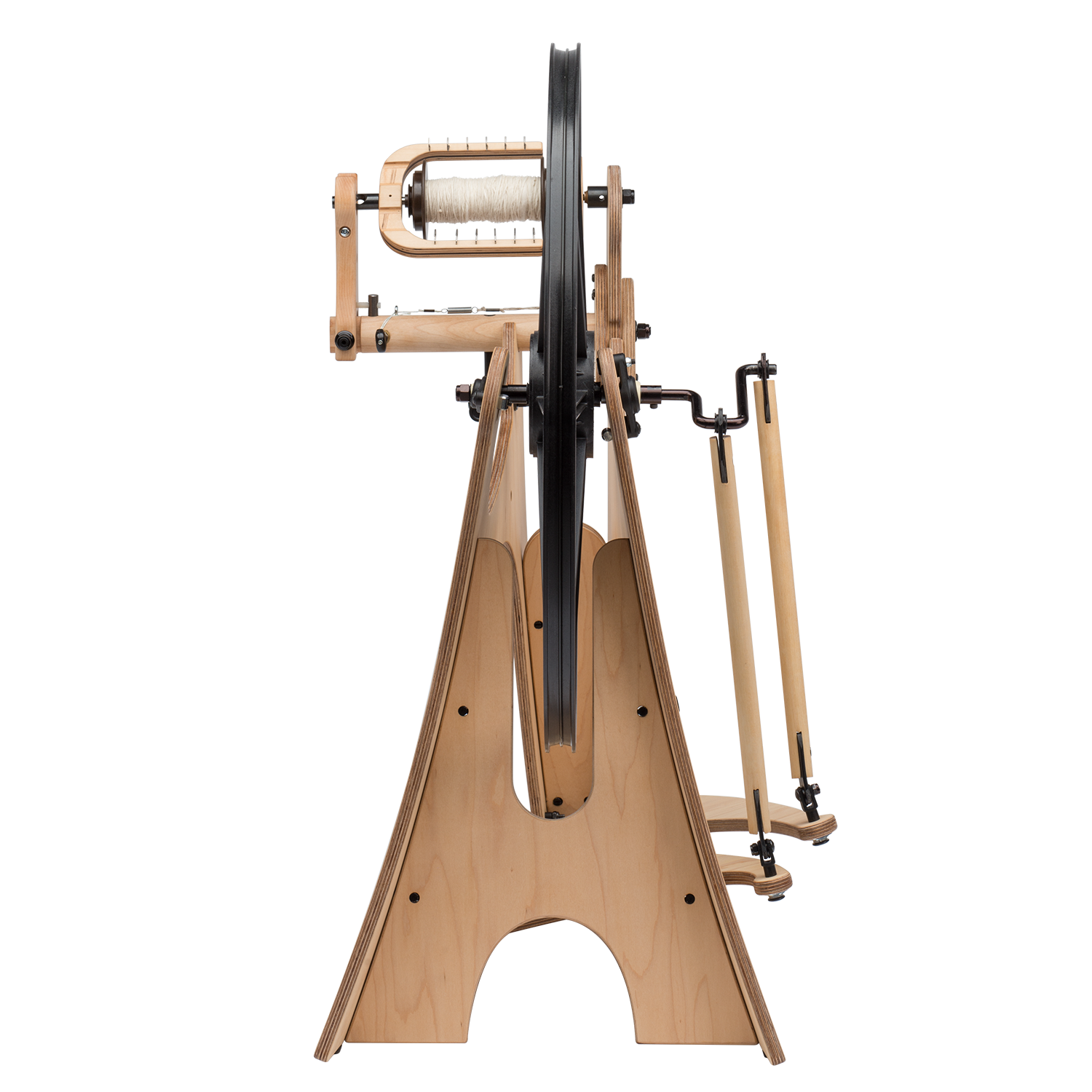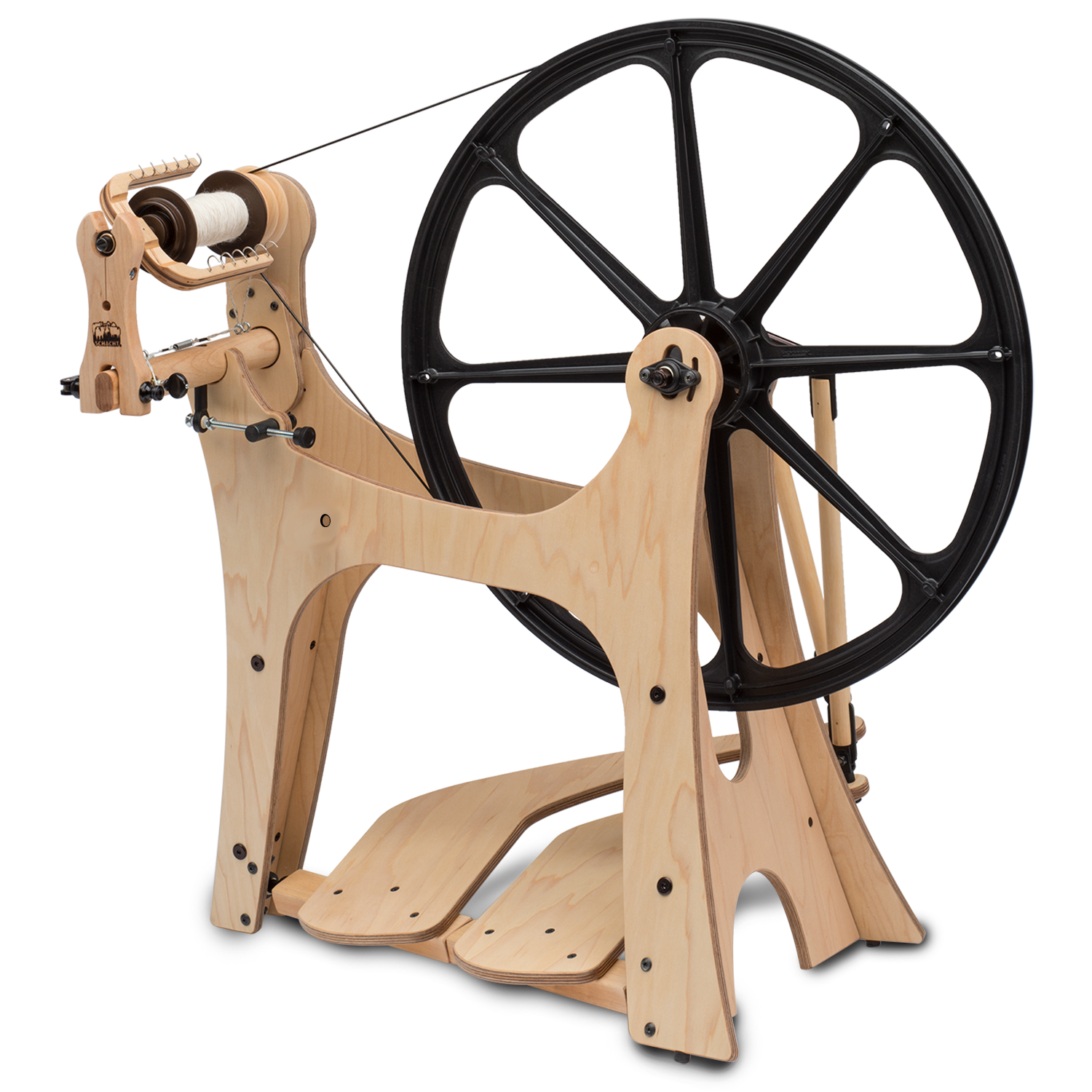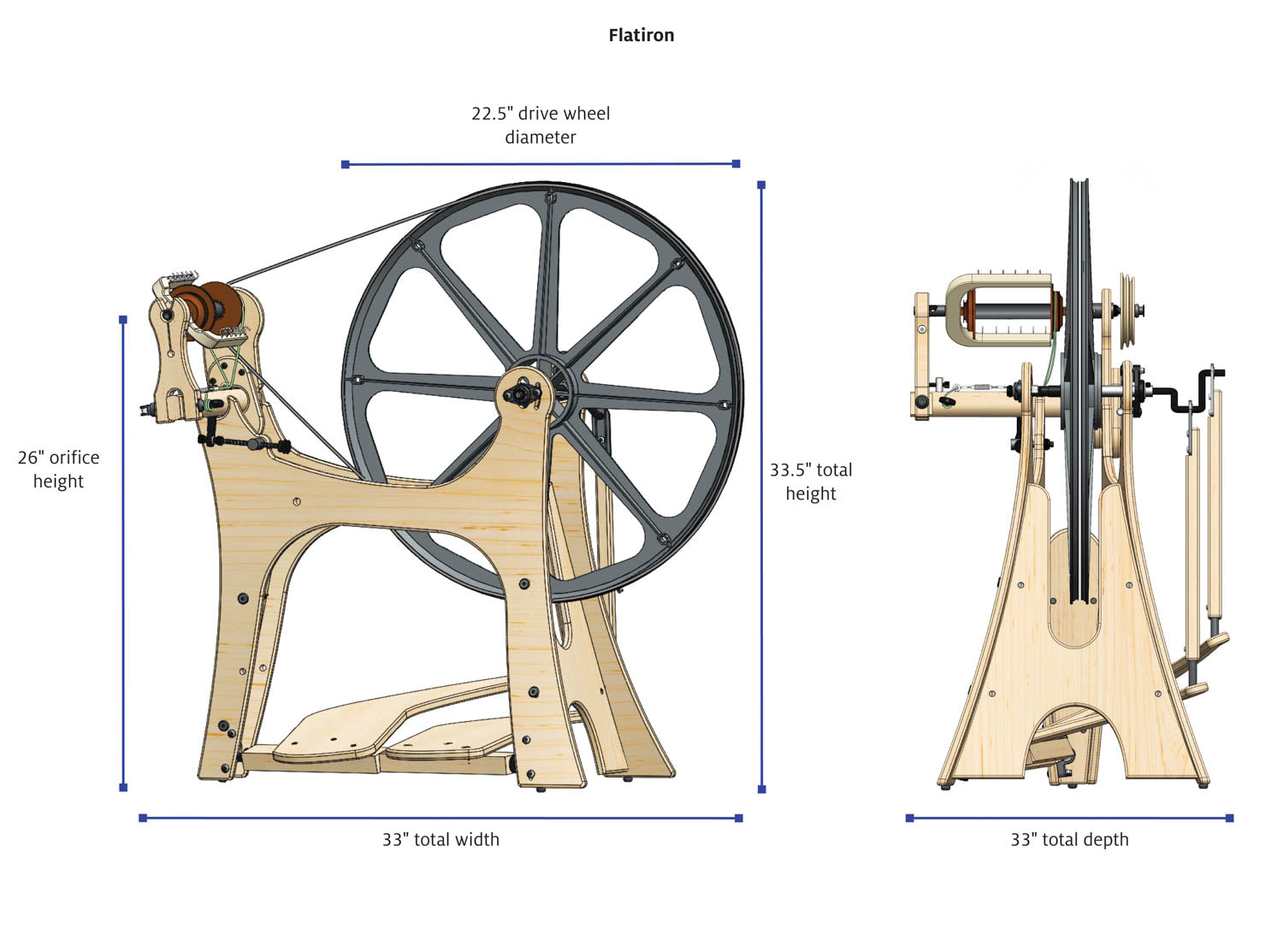Jillian's Tips for Bulky Spinning
By Jillian Moreno
I love spinning bulky yarn—there is such instantaneous joy to it. A lot of spinners only spin bulky when they spin art yarn or highly textured yarn. I do that too, but I like the mellowness of spinning a smooth chubby yarn.
For spinners who mostly spin fine or even medium yarns, spinning bulky can be daunting. Here are a few tips to help you spin fat.
What You'll Need
-
fiber—Jillian used our Larimer Street braid
-
Flatiron
-
Bulky Plyer Flyer
Materials and Equipment
Directions
Use more fiber.
A fatter yarn needs more fiber than a thin yarn, so you need to dip down deeper into the drafting triangle. It's best to do this in steps. You can see in the photo how far I dip down into the fiber for each of the plyback samples.
Use less twist.
A thicker yarn with more fiber needs less twist to hold it together. All of those individual fibers really contribute to the structural integrity of a yarn, so less twist is needed—sometimes a lot less twist.
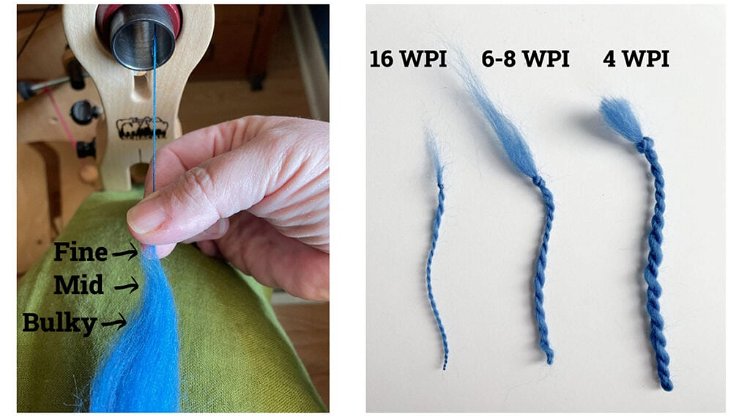
Change your wheel first, then your body.
Let your wheel help you here. The number one easiest way to spin with less twist is to increase your whorl size. Go up in size with grooves or whorls, and you will add less twist while you treadle at your regular rate. I'm spinning my yarns on my Flatiron and I can't say enough about the slow and very slow whorls that Schacht has. They are big and giant (slow ratios are 6.8:1 / 8.5:1 and extra slow ratios are 4.6:1 / 5.2:1). I call them the Salad Plate and the Dinner Plate whorls. I won't spin fat without them.
If you're still getting too much twist, even on the largest whorl, you can change your body. Treadle slower and draft faster—some combination of the two will work. There are lots of times I have to use a giant whorl and still treadle slower. It all depends on the yarn I am making.
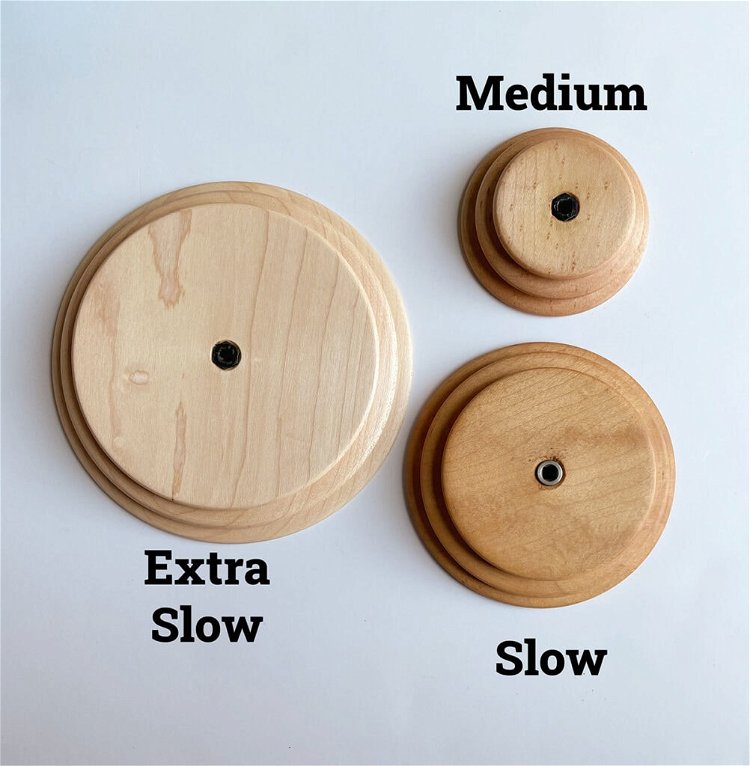
Check your orifice.
It's really hard to make yarn bigger than the orifice of your wheel. I'm not saying you can't, but you will spend extra time squeezing it through and hand-winding it onto the bobbin. You can see the difference between a regular flyer orifice and the bulky flyer orifice in the photo. Consider a bulky flyer with a giant orifice and bobbin: you don't have to worry about your yarn not fitting through and the bulky bobbin is giant. The bulky flyer is big, but it sits really nicely on the Flatiron. It doesn't make the wheel wobble or drag down the treadling. And it looks cool.
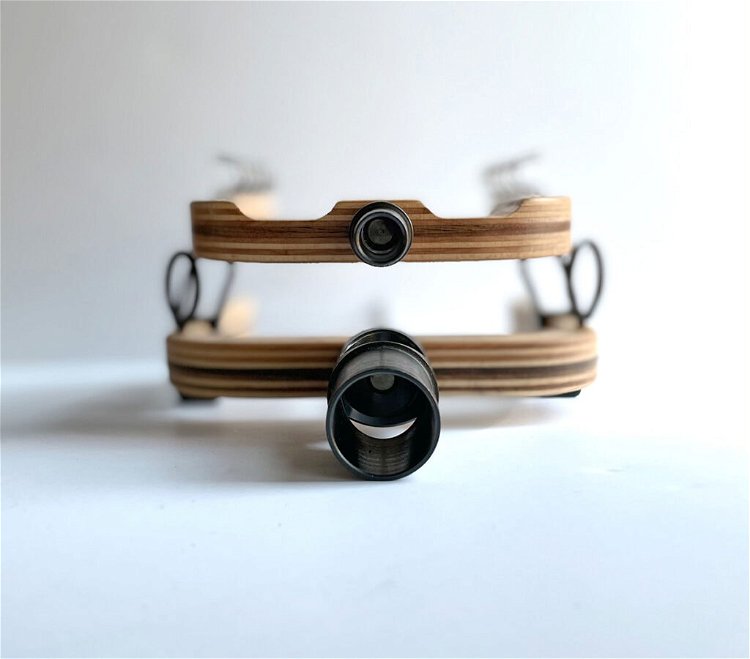
Get the yarn on the bobbin as fast as possible.
This goes along with spinning with less twist. All the time yarn spends on your side of the orifice, it's gaining twist. Maggie Casey demurely encourages big yarn spinners to “Shove it up the orifice.” I increase my take-up, but not so much the yarn is ripped out of my hands. I also work close to the orifice, so my yarn has a shorter distance to travel.
Slow down, overall.
At first, bulky yarns are slower yarns to spin. It takes less time to spin 4 ounces of fiber, but more time to create each inch of yarn until you get the hang of it. Be kind to yourself and give yourself the gift of slowing down until you get the rhythm and feeling of spinning bulky.
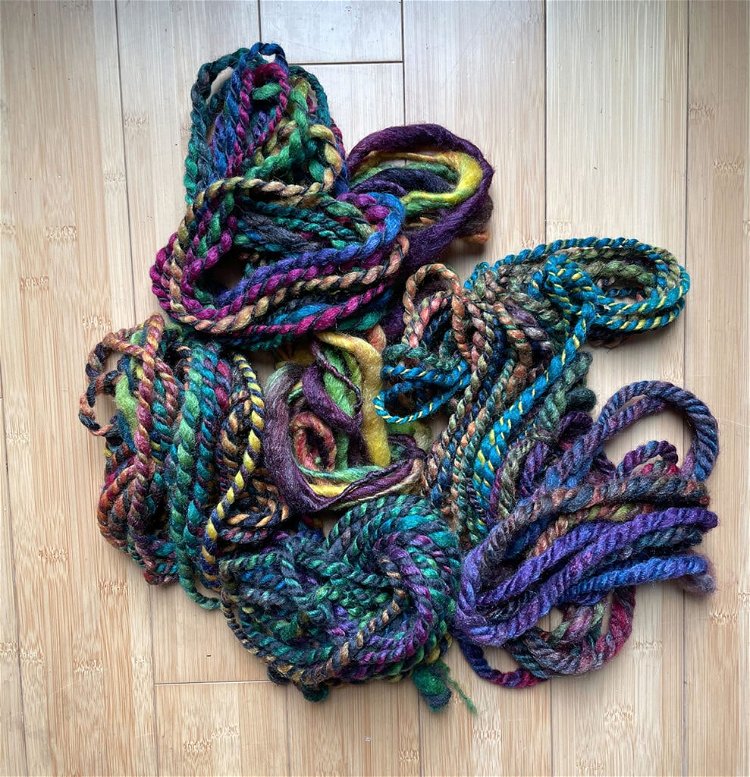
Choose your fiber and prep it carefully, especially if you are new to bulky yarns.
Find a fiber that is easy for you to work with. I like medium to longish wools. BFL is one of my favorites for bulky.
Make sure your fiber is fluffed open so the individual fibers will slide easily for quick drafting. I often attenuate my fibers before spinning fat. The photo below shows two different ends from the same fiber: the left side has been freshly unbraided, the right is the same piece fully fluffed.
I also strip my fiber—how much depends on the width of my braid and how fat I want to spin. I still want to be able draft it, but not spend a lot of time drafting down to the size I want.
Spin beautiful fiber; it really helps. Do not save your beautiful fibers just for special yarns. Even when I'm building skills, a beautiful fiber always helps me enjoy the process. The fiber I spun for these yarns is a BFL/silk blend from The 100th Sheep; the colorway is Larimer Street.
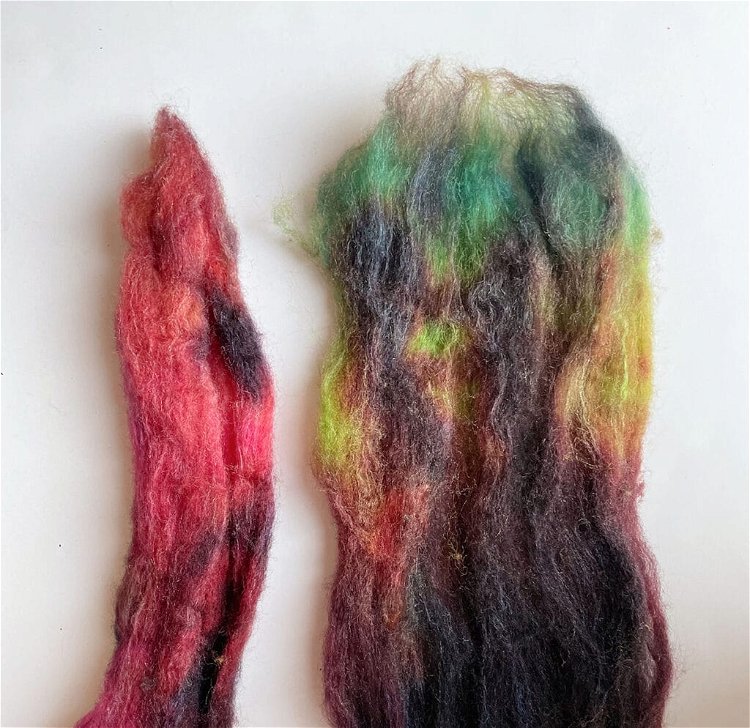
Draft woolen.
Yes, woolen is my default draft, and I'm always trying to get folks to spin woolen, but for fat yarns a woolen draft does great things. It adds air to your yarn, helping the yarn get fat, and that loft keeps the yarn light. A bulky, worsted-drafted yarn weighs a lot more and uses more fiber than the same size woolen-spun yarn. If you could hold the yarn in this photo, you would enjoy its weightless, lofty feel.

Fiber.
The BFL/silk braid from The 100th Sheep comes in an unusual package. There are four one-ounce strips braided together: three dyed in beautiful colors and one dyed black. This gives you some interesting options for making unique yarns. I love the saturated colors of Larimer Street, and the shine from BFL/silk makes every color glow.
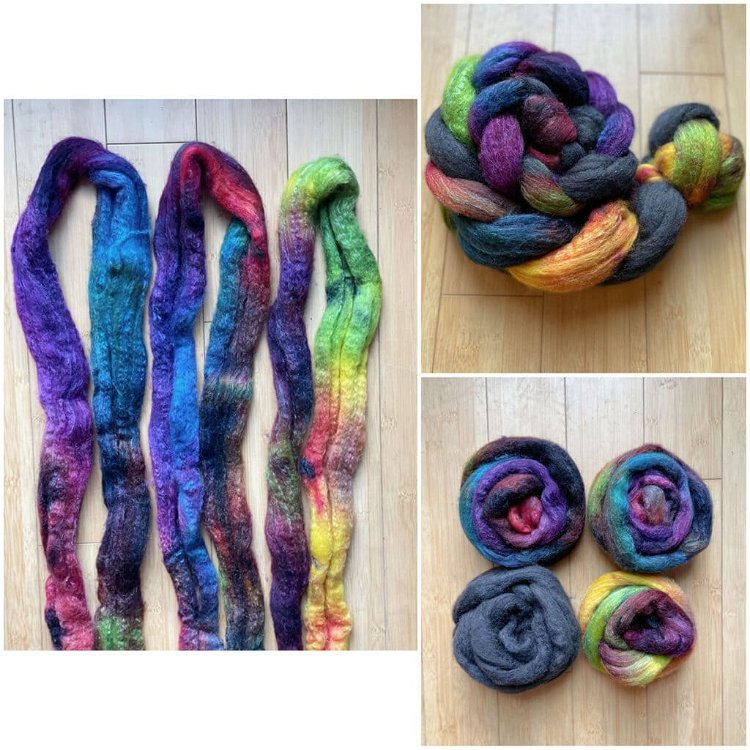
Yarns I spun
It's always hard for me to spin just one yarn when someone hands me a braid. This braid was no different. I spun six different yarns, mostly two-ply. I spun them all with a woolen draft. I whacked the yarns in finishing to get them to bloom as much as they could.
Color and Color
These two combine two color plies. The yarn on the left has one fine ply and one thick ply, and the yarn on the right has two chubby plies. Plying thick and thin strands together creates a slightly textured yarn, and that produces interesting cloth when it's knitted or woven. You can also swap out the fine ply with a sparkly thread.
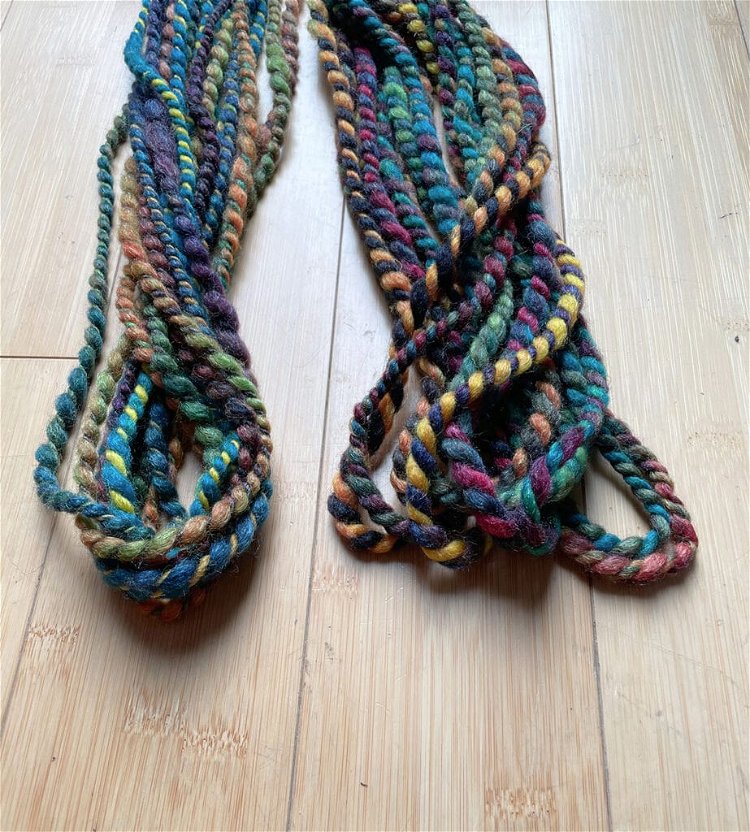
Color and Black
I spun these two yarns the same as the color and color yarns, swapping out one ply in each with black. Using black against the saturated colors in the braid makes the yarn look like stained glass. I especially like the fine black ply and fat color ply yarn on the left.
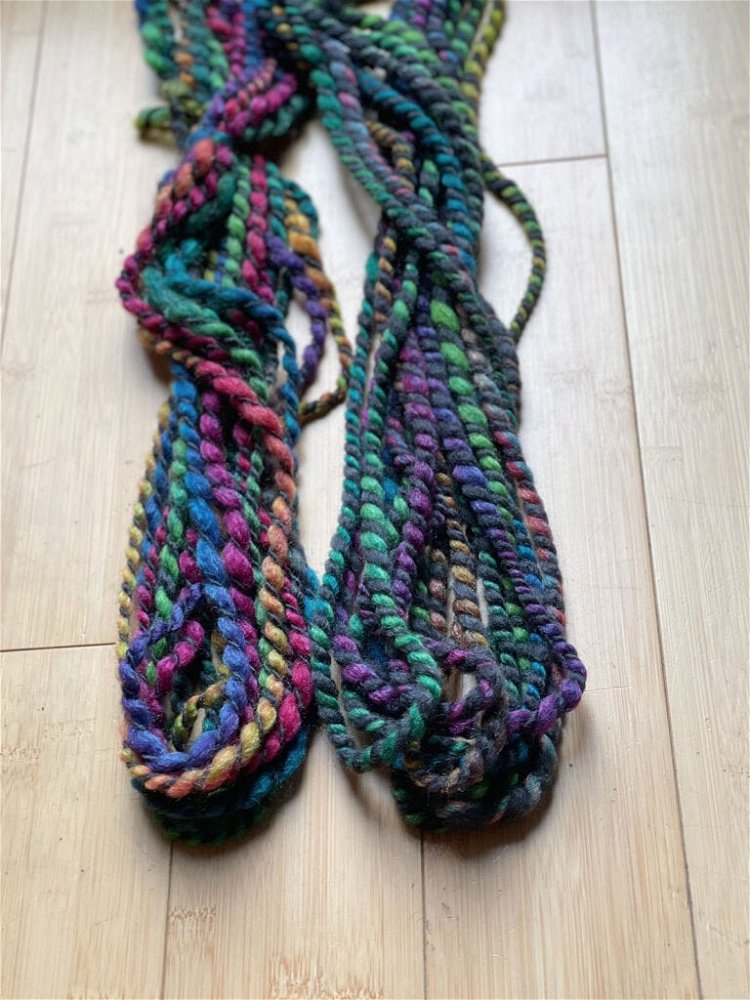
Thick-and-Thin and Chain-ply
I wanted a fat singles yarn, since BFL is such a great fiber for making singles that will stay singles. I chose to make a thick-and-thin yarn—I can't wait to knit this one! Then I wanted to make a super fat yarn, so I spun a fat singles and chain-plied it, tripling the size. This yarn is less than 2 WPI and so squishy.
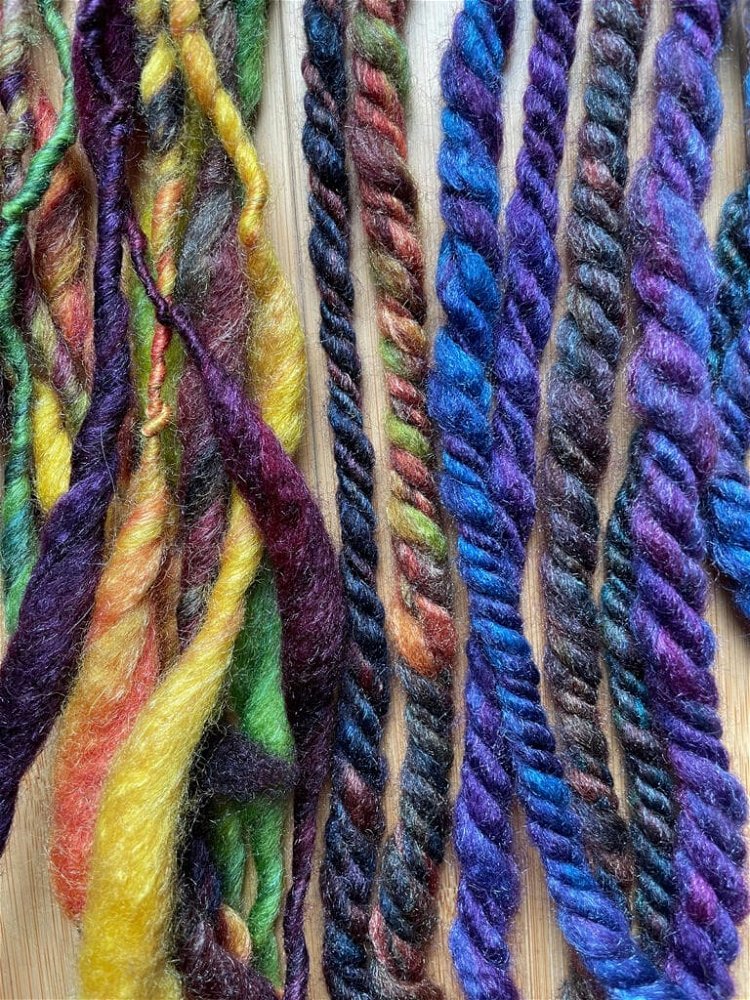
Like spinning any new-to-you yarn, bulky yarns take a bit of practice. Take some time to focus, draft more yarn with less twist, and you'll be spinning all kinds of bulky yarns in no time.
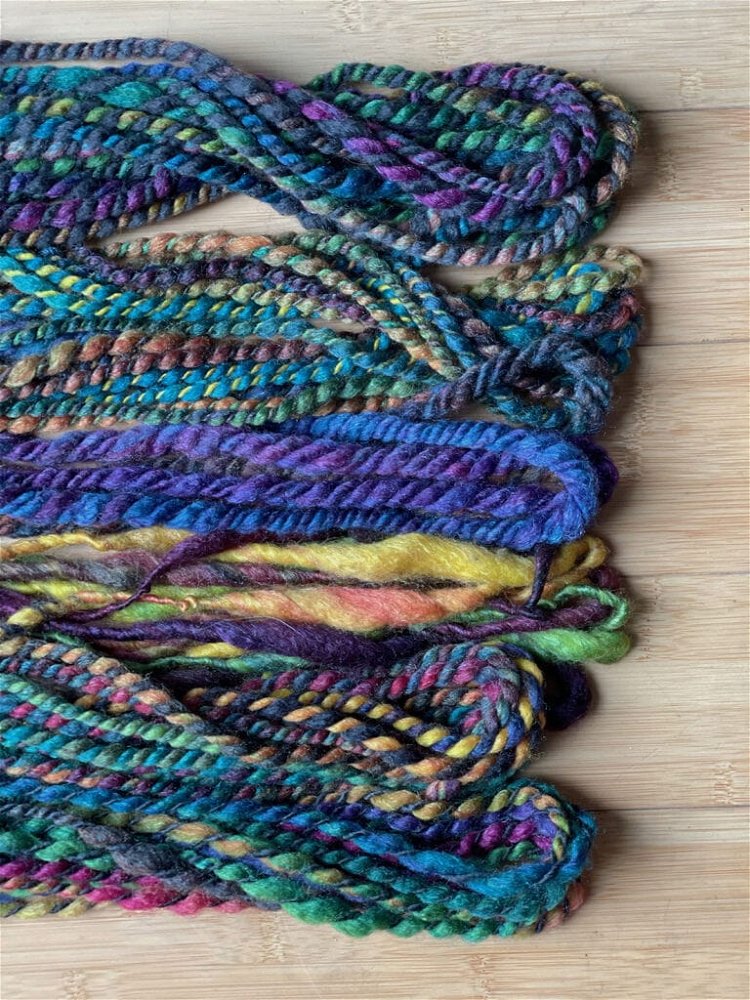
Notes
Jillian Moreno, author of the best-selling spinning book Yarnitecture: A Knitter's Guide to Spinning: Building Exactly the Yarn You Want, can't stop writing and teaching about spinning and using handspun. She is passionate about exploring the structure of yarn and color, and using them in an intentional way in knitting, stitching, and weaving She enthusiastically encourages her students to feel confidence and joy making and using their handspun. She is an editor for both PLY Magazine and Knitty.com. When she's at home in Ann Arbor, Michigan, she can be found wantonly basking in her stash and working on her next book. Keep up with her fiber exploits at jillianmoreno.com, and through her handspinning Patreon.

